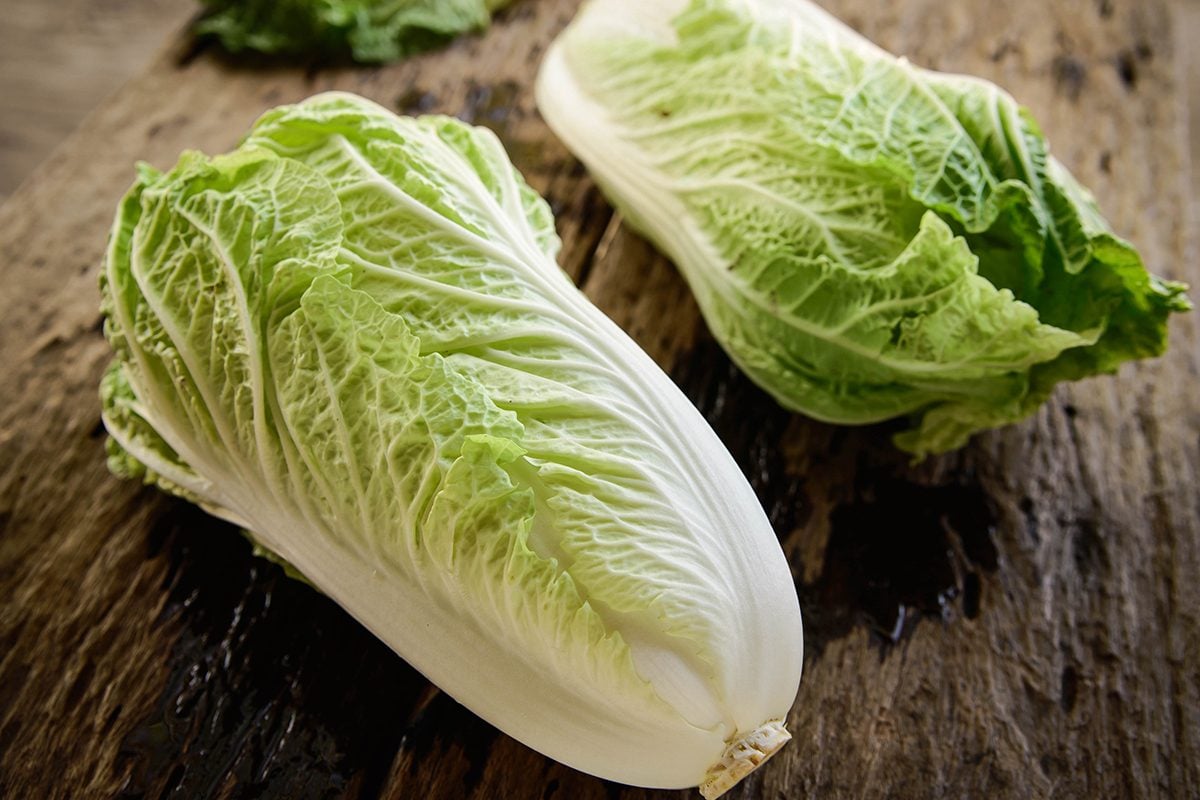
Chinese cabbage, also known as Napa cabbage or bok choy, is a leafy vegetable that is widely used in Asian cuisine. With its crisp texture and delicate flavor, it has gained popularity not only in China but also in various other parts of the world. This versatile vegetable is not only delicious but also packed with nutrients, making it a great addition to any healthy diet.
In this article, we’ll delve into 15 fascinating facts about Chinese cabbage that will not only pique your interest but also leave you amazed at the myriad of benefits this humble vegetable offers. From its rich history to its culinary uses and health benefits, let’s explore the world of Chinese cabbage and discover why it deserves a spot in your kitchen.
Key Takeaways:
- Chinese Cabbage, also known as Napa Cabbage, is a nutritious and versatile vegetable that can be enjoyed raw in salads or cooked in various Asian dishes.
- With its high water content, fiber, and rich supply of vitamins and minerals, Chinese Cabbage is a great addition to a healthy diet and symbolizes wealth and prosperity in traditional Lunar New Year meals.
Chinese Cabbage, also known as Napa Cabbage, is a leafy vegetable that belongs to the Brassica family.
With its crunchy texture and mild flavor, Chinese Cabbage has become a popular ingredient in various cuisines.
Chinese Cabbage is rich in vitamins and minerals.
This nutritious vegetable is packed with vitamins A, C, and K, as well as folate, calcium, and potassium.
Chinese Cabbage is a low-calorie food.
If you’re watching your calorie intake, Chinese Cabbage is a great choice as it is low in calories but high in fiber.
Chinese Cabbage is commonly used in Asian dishes.
From stir-fries and soups to kimchi and dumplings, Chinese Cabbage plays a central role in many Asian culinary traditions.
Chinese Cabbage is versatile and can be consumed both raw and cooked.
Enjoy it raw in salads for a refreshing crunch or cook it by steaming, braising, or sautéing for a softer texture.
Chinese Cabbage is a popular ingredient in hot pot dishes.
Adding Chinese Cabbage to a hot pot not only enhances the flavor but also provides a healthy dose of nutrients.
Chinese Cabbage is high in antioxidants.
The antioxidants found in Chinese Cabbage help protect the body against oxidative stress and reduce the risk of chronic diseases.
Chinese Cabbage is known for its detoxifying properties.
Its high water content and fiber improve digestion and help flush out toxins from the body.
Chinese Cabbage is a great source of dietary fiber.
Fiber aids in digestion, promotes satiety, and helps regulate blood sugar levels.
Chinese Cabbage is easy to grow in home gardens.
Whether you have a large backyard or a small balcony, you can cultivate Chinese Cabbage in pots or vegetable beds.
Chinese Cabbage has a long shelf life.
When stored properly in a cool, dry place, Chinese Cabbage can stay fresh for up to a couple of weeks.
Chinese Cabbage is an excellent source of hydration.
With its high water content, Chinese Cabbage helps keep the body hydrated and supports overall health.
Chinese Cabbage comes in different varieties.
While Napa Cabbage is the most common variety, there are also other types like Michihili and Bok Choy.
Chinese Cabbage is a staple in many traditional dishes during the Lunar New Year.
It symbolizes wealth and prosperity, making it an important ingredient in festive meals.
Chinese Cabbage is a great addition to a healthy diet.
With its numerous health benefits and culinary versatility, incorporating Chinese Cabbage into your meals can be an excellent choice.
Conclusion
Chinese cabbage, also known as Napa cabbage, is a versatile and nutritious vegetable that has gained popularity in many cuisines around the world. With its mild and slightly sweet flavor, Chinese cabbage adds a unique taste and texture to a variety of dishes.
Not only is Chinese cabbage delicious, but it also offers numerous health benefits. It is rich in vitamins A, C, and K, as well as important minerals like calcium and potassium. The high fiber content of Chinese cabbage promotes digestion and helps maintain a healthy weight.
Whether you stir-fry it, add it to soups, or use it as a filling in dumplings, Chinese cabbage is a fantastic choice for any home cook looking to explore new flavors and incorporate more nutritious vegetables into their diet.
FAQs
Q: Is Chinese cabbage the same as regular cabbage?
A: No, Chinese cabbage has a slightly different taste and texture compared to regular cabbage. It has longer and more delicate leaves with a mild, slightly sweet flavor.
Q: How do I select and store Chinese cabbage?
A: When selecting Chinese cabbage, look for heads that are firm and heavy. Avoid those with wilted or discolored outer leaves. To store, keep it in the refrigerator in a plastic bag for up to a week.
Q: What are some popular ways to cook Chinese cabbage?
A: Chinese cabbage can be stir-fried, steamed, added to soups, or used as a filling for dumplings. It also makes a great addition to salads and can even be pickled for a tangy side dish.
Q: Can Chinese cabbage be substituted for regular cabbage in recipes?
A: Yes, in most cases, Chinese cabbage can be used as a substitute for regular cabbage. However, keep in mind that the flavors and textures may be slightly different, so you may need to adjust the cooking time or seasonings.
Q: Is Chinese cabbage a healthy vegetable?
A: Absolutely! Chinese cabbage is low in calories but high in vitamins, minerals, and fiber. It is a great source of antioxidants and can aid in digestion and weight management.
Q: Are there any specific cooking tips for Chinese cabbage?
A: When stir-frying, it is best to add the Chinese cabbage towards the end of the cooking process to retain its crispness. Be sure to wash the leaves thoroughly before cooking to remove any dirt or debris.
Chinese cabbage's versatility and health benefits make this leafy vegetable a must-try in various dishes. Exploring its origins, nutritional value, and culinary applications has likely piqued your interest in other Asian greens. Why not continue your journey by learning about bok choy's unique characteristics and how it differs from Chinese cabbage? Expanding your knowledge of these vegetables will help you appreciate their flavors and incorporate them into your cooking repertoire.
Was this page helpful?
Our commitment to delivering trustworthy and engaging content is at the heart of what we do. Each fact on our site is contributed by real users like you, bringing a wealth of diverse insights and information. To ensure the highest standards of accuracy and reliability, our dedicated editors meticulously review each submission. This process guarantees that the facts we share are not only fascinating but also credible. Trust in our commitment to quality and authenticity as you explore and learn with us.


